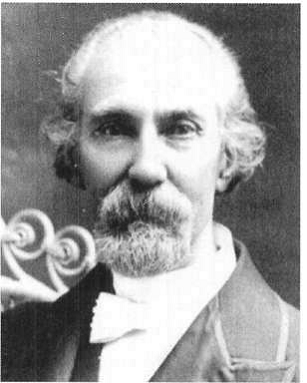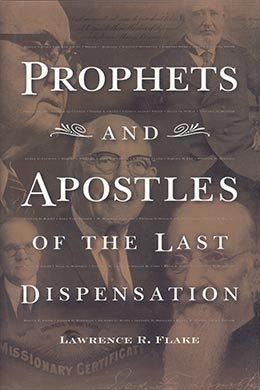George Teasdale
Lawrence R. Flake, Prophets and Apostles of the Last Dispensation (Provo, UT: Religious Studies Center, Brigham Young University, 2001), 403–5.

Born: 8 December 1831, London, Middlesex County, England
Quorum of the Twelve Apostles: 16 October 1882 (age 50)
Died: 9 June 1907 (age 75), Salt Lake City, Utah
Thus saith the Lord to the Twelve, and to the Priesthood and people of my Church: Let my servants George Teasdale and Heber J. Grant be appointed to fill the vacancies in the Twelve . . . for you have a great work to perform.” [1] So spoke the Lord in a revelation given to President John Taylor on the morning of 13 October 1882.
George Teasdale, a fifty-year-old native of Britain, had joined the Church thirty years earlier in London after having his interest kindled by an anti-Mormon tract published by the Church of England. A fellow employee at the upholstery shop where George worked was a Latter-day Saint. Capitalizing on the interest created by the pamphlet, this faithful member bore his testimony of the gospel so powerfully that George was converted. Thereafter both men were the subjects of ridicule and abuse from the other workers. Brother Teasdale zealously devoted the next nine years before coming to Zion to sharing this newly found truth with his countrymen. As president of seven conferences in England and Scotland, he met many choice souls, among whom was Emily Emma Brown, whom he married in 1853. To them were born four children in England, but two of them died shortly before the family immigrated to America.
In Utah, Brother Teasdale, who had received training at the University of London, taught school for a short time. He joined the Salt Lake Dramatic Association; he also added his tenor voice to the Tabernacle Choir. A career in the mercantile business began in 1862 when he was given charge of President Brigham Young’s merchandise store. Later he supervised the General Tithing Store and still later became involved in ZCMI. His extensive missionary service included two separate assignments to his homeland, once as president of the European Mission; a colonizing assignment to Mexico; and missions to the Indian territory and the southern states.
While serving as president of the European Mission, President Teasdale was impressed to assign a Danish elder to serve in Germany. The missionary would have to learn a new language, even though there was a great need of laborers in Denmark where the people spoke his native tongue. When the missionary questioned the assignment, President Teasdale confessed that he didn’t understand it either but counseled the elder to accept the call. Shortly after his arrival in Schleswig- Holstein, Germany, the missionary found a large number of Scandinavians who had come to that country to build a canal. He preached the gospel to them, converting many.
As a member of the Twelve, Brother Teasdale traveled widely among the stakes of the Church. His simplicity and sincerity endeared him to the Saints. The Atonement of the Savior was his favorite sermon topic, and spirituality was his leading character trait. When asked to what he attributed his great success in the ministry, he would often reply, “To the fact that I have always tried to find out the will of the Lord, and then do it.” [2]
Notes
[1] James R. Clark, Messages of the First Presidency of the Church of Jesus Christ of Latter-day Saints 1833–1964 (Salt Lake City: Bookcraft, 1965), 2:348.
[2] Hugh J. Cannon,” Apostle George Teasdale,” Lives of Our Leaders: Character Sketches of Living Prophets and Apostles of the Church of Jesus Christ of Latter-day Saints (Salt Lake City: Deseret News, 1901), 141. See also Matthias F. Cowley, Prophets and Patriarchs of the Church of Jesus Christ of Latter-day Saints (Chattanooga, TN: Ben E. Rich, 1902), 261–68; Andrew Jenson, Latter-day Saint Biographical Encyclopedia (Salt Lake City: Andrew Jenson History, 1901), 1:144–47.
